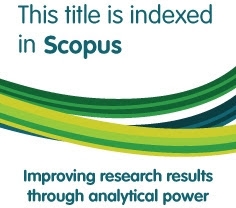Trusting in God: Religious Inscriptions on Malay Seals
Abstract
Malay seals – which can be defined as seals from Southeast Asia with inscriptions in Arabic script – date from the 16th to the 20th centuries, and originate from all parts of Nusantara. The inscriptions on Malay seals serve to identify the seal owner through his (or her) name or title, often accompanied by a pedigree, date, and place name. About one-third of all Malay seals also include a religious legend, usually in the form of a pious expression, a supplication to God addressed by His Beautiful Names (al-asmā’ al-ḥusná), or a quotation from the Qur’an. This article demonstrates a striking degree of uniformity in the religious expressions found in Malay seals from all over the archipelago. Over half of these can be characterized as variations on a theme of al-wāthiq billāh, ‘he who trusts in God’, but at the same time, there are also distinctive regional associations in different states in the archipelago with certain preferred phrases.
Keywords
Full Text:
PDFReferences
’Ali, ’Abdullah Yusuf. 2007. The Holy Qur’an, Text and Translation. Kuala Lumpur: Islamic Book Trust.
Azra, Azyumardi. 2004. The Origin of Islamic Reformism in Southeast Asia; Networks of Malay-Indonesian and Middle Eastern “Ulama” in the Seventeenth and Eighteenth Centuries. Honolulu: University of Hawai’i Press.
Bosworth, Clifford Edmund. 1980. The Islamic Dynasties. Edinburgh: Edinburgh University Press.
Canaan, Tewfik. 1937. “The Decipherment of Arabic Talismans.” Magic and Divination in Early Islam 4(2): 69–110.
Codrington, Oliver. 1904. A Manual of Musalman Numismatics. London: Royal Asiatic Society.
Content, Derek J., ed. 1987. Islamic Rings and Gems: The Benjamin Zucker Collection. London: Philip Wilson Publishers.
Daud, Alfani. 1997. Islam Dan Masyarakat Banjar. Jakarta: RajaGrafindo Persada.
Doutté, Edmond. 1908. Magie et Religion dans L’afrique du Nord. Alger: Adolphe Jourdan.
Ettinghausen, Richard. 1974. “Arabic Epigraphy: Communication or Symbolic Affirmation. Near Eastern Numismatics, Iconography, Epigraphy and History: Studies in Honour of George C. Miles.” American University of Beirut: 297–317.
Fathurahman, Oman. 2016. Shattariyah Silsilah in Aceh, Java, and the Lanao Area of Mindanao. Tokyo: Research Institute for Languages and Cultures of Asia and Africa, Tokyo University of Foreign Studies.
Fehér, Géza. 1959. “Les Cachets et Anneaux Sigillaires à Inscription Turque Du Musée National Hongrois.” Folia Archaeologica 11: 187–96.
Fekete, L., and G. Hazai. 1977. Einführung in die persische Paläographie: 101 persische Dokumente. Budapest: Akadémiai Kiadó.
Gallop, Annabel Teh. 2002. “Malay Seal Inscriptions : A Study in Islamic Epigraphy from Southeast Asia.” Ph.D. School of Oriental and African Studies (University of London).
———. 2013. “The Amuletic Cult of Ma’ruf Al-Karhi in the Malay World.” In Writings and Writing: Investigations in Islamic Text and Script in Honour of Dr Januarius Just Witkam, eds. Robert M. Kerr and Thomas Milo. Cambridge: Archetype, 167–96.
———. 2018. “What’s in a Name? Malay Seals as Onomastic Sources.” Malay Literature 31(1): 1–28.
———. 2019. Malay Seals from the Islamic World of Southeast Asia: Content, Form, Context, Catalogue. Singapore: NUS Press in association with the British Library.
Gardet, L. 1960. “Al-Asma’ al-Husna.” In Encyclopaedia of Islam v.1, Leiden: Brill, 714–17.
Gignoux, P, and Ludvik Kalus. 1982. “Les Formules Des Sceaux Sasanides et Islamiques: Continuité Ou Mutation? In Mélanges Offerts À Raoul Curiel.” Studia Iranica 11: 123–53.
Hamid, Abu. 1994. Syekh Yusuf Makassar: seorang ulama, sufi dan pejuang. Jakarta: Yayasan Obor Indonesia.
Hammer-Purgstall, Joseph von. 1850. Abhandlung über die Siegel der Araber, Perser und Türken. Vienna: Hof- und Staatsdruckerei.
Jones, Russell. 1999. Hikayat Raja Pasai. Kuala Lumpur: Yayasan Karyawan and Fajar Bakti.
Kalus, Ludvik. 1981. Catalogue Des Cachets, Bulles, et Talismans Islamiques. Paris: Bibliothèque nationale.
———. 1986. Catalogue of Islamic Seals and Talismans in the Ashmolean Museum. Oxford: Clarendon.
———. 1987. “Gems” ed. Derek J. Islamic Rings and Gems: the Benjamin Zucker Collection: 233–352.
Khalid, M. Hussain. 1992. Taj Us-Salatin. Bukhari al-Jauhari. Kuala Lumpur: Dewan Bahasa dan Pustaka.
Khan, A. D. 1994. Diplomatics of the Soyurghal Farman of the Great Mughals, 1556-1707. Allahabad: Quemer Publications.
Milner, Anthony Crothers. 1982. Kerajaan: Malay Political Culture on the Eve of Colonial Rule. Tucson: Arizona University Press.
Naqshabandi, U. N., and H. A. A al-Horri. 1974. Al-Akhtām al-Islāmiyya Fī al-Matḥaf al-’Irāqī/The Islamic Seals in the Iraq Museum. Baghdad: Ministry of Information, Directorate General of Antiquities.
Porter, Venetia. 2011. Arabic and Persian Seals and Amulets in the British Museum. London: British Museum Press.
Redhouse, J. W. 1880. “On ‘The Most Comely Names,’ al-Asmā’ al-Ḥusnā, i.e. The Laudatory Epithets, or the Titles of Praise, Bestowed on God in the Qur’ān or by Muslim Writers.” The Journal of the Royal Asiatic Society of Great Britain and Ireland 12(1): 1–69.
Reinaud, Joseph Toussaint. 1828. Description des monumens musulmans du cabinet de m. le duc de Blacas. Paris: Impr. Royale.
Römer, Claudia. 1995. Osmanische Festungsbesatzungen in Ungarn Zur Zeit Murads III. Dargestellt Anhand von Petitionen Zur Stellenvergabe. Wien: Verlag der Österreichischen Akademie der Wissenschaften.
Rubenson, Sven. 1987. Correspondence and Treaties, 1800-1854. 1st edition. Evanston, Ill. : Addis Ababa: Northwestern University Press.
Sewang, Ahmad M. 2005. Islamisasi Kerajaan Gowa: abad XVI sampai abad XVII. Jakarta: Yayasan Obor Indonesia.
Tirmizi, S.A.I. 1982. Calendar of Acquired Documents (1526-1267). New Delhi: National Archives of India.
Uzuncarsili, Ismail Hakki. 1959. Topkapı Sarayı Müzesi mühürler seksiyonu rehberi = Guide book of the seals section of Topkapı Saray Museum. Istanbul: Şehir Matbaasi.
Wenzel, Marian. 1993. Ornament and Amulet. Rings of the Islamic Lands. 1st edition. London: Nour Foundation.
DOI: https://doi.org/10.36712/sdi.v28i1.15075
Refbacks
- There are currently no refbacks.

All publication by Studia Islamika are licensed under a Creative Commons Attribution-NonCommercial 4.0 International License.
Studia Islamika, ISSN: 0215-0492, e-ISSN: 2355-6145
View My Stats
